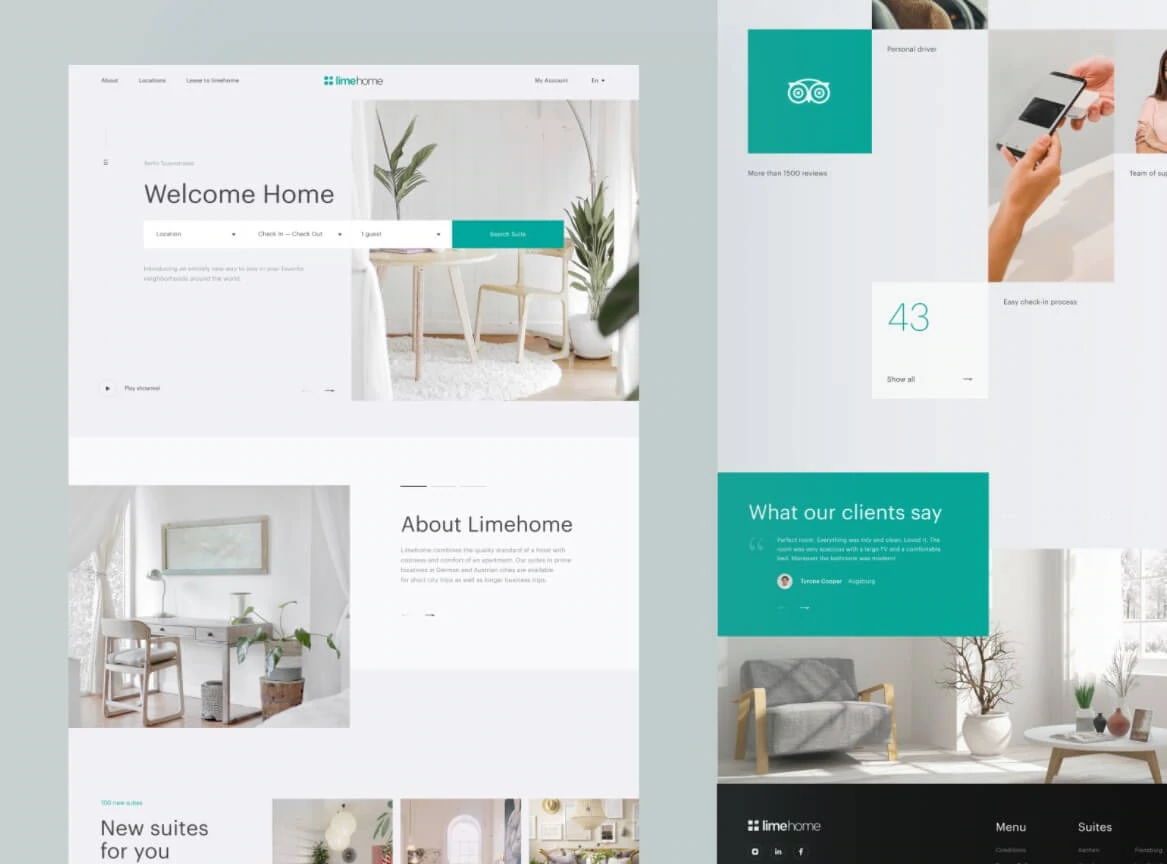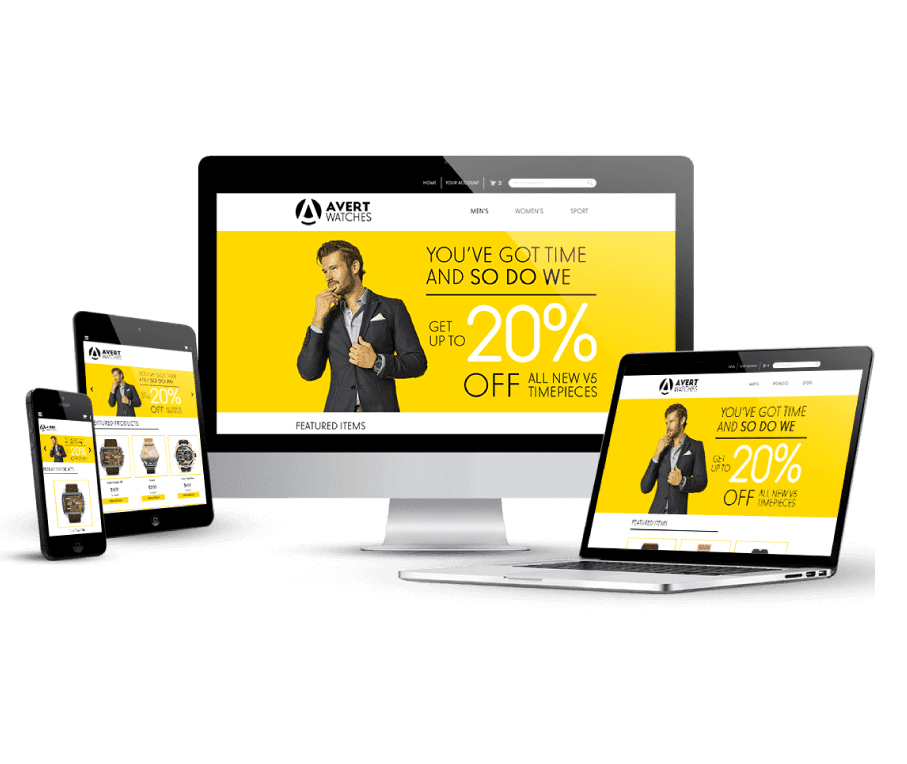The Effect of Responsive Features on Your Website Design Success
The Effect of Responsive Features on Your Website Design Success
Blog Article
Secret Approaches for Applying User-Centric Web Site Design to Increase Interaction
When thinking about the application of user-centric site design, certain techniques are critical in increasing interaction. Extensive research right into individual needs and choices creates the foundation, leading the production of customer characters to inform layout choices. User-friendly navigating and responsive interfaces are essential, making sure ease of accessibility across all gadgets. On the other hand, individualizing material improves customer complete satisfaction, and robust ease of access attributes widen reach. These techniques jointly promote an even more purposeful online experience. But just how do these elements collaborated properly, and what sensible actions can be taken to ensure their effective integration?
Understanding Individual Requirements
Recognizing user needs is a fundamental step in the procedure of user-centric website style. Strategies such as surveys, meetings, and individual screening can give beneficial qualitative and quantitative information regarding how customers connect with the internet site.
Analyzing this information allows developers to develop comprehensive individual personas that stand for the different sectors of the target market. These personas aid notify layout decisions by highlighting details customer objectives and challenges, assisting the growth of features that deal with these needs successfully. Comprehending the context in which customers run-- such as their setting, gadget preferences, and time constraints-- can additionally refine the style technique.
Compassion plays an important duty in this process, enabling designers to see the site from the individual's viewpoint. By prioritizing individual demands, the layout procedure becomes much more concentrated, preventing the incorporation of unnecessary elements that could mess the individual experience. Ultimately, a deep understanding of customer requirements contributes in crafting a site that is both useful and meaningful.
Designing Intuitive Navigating
Having established an extensive understanding of customer requirements, the next action in user-centric site design involves producing user-friendly navigation. Effective navigation is essential to user fulfillment, influencing just how quickly customers can locate details and total jobs. To accomplish intuitive navigating, developers have to prioritize simplicity and clearness, making certain that the navigation structure is sensible and consistent throughout the website.
Organizing material right into a clear pecking order is important. Website Design. Making use of familiar tags and symbols can lead customers easily, lowering cognitive load and enhancing the general individual experience. A properly designed navigation bar must be prominently put, allowing users to recognize their current location and conveniently explore other areas of the site
It is additionally important to integrate interactive aspects such as breadcrumbs and search capabilities to assist customers in navigating complex sites. These attributes give added paths and improve the access of content, satisfying numerous individual preferences and behaviors.
Examining navigation with genuine customers is vital to determine possible pain points and guarantee performance lines up with customer expectations. Routine feedback loops and iterative renovations can help preserve an efficient navigation system that adapts to progressing individual requirements, ultimately boosting interaction and complete satisfaction.
Developing Responsive Interfaces
Inevitably, creating responsive interfaces is a pivotal aspect of contemporary website design, making sure that sites are practical and obtainable across a wide variety of devices and screen sizes (Website Design). This adaptability is critical in a landscape where customers gain access to web content via smart devices, laptops, tablet computers, and desktop computers, each with differing resolutions and orientations. The key goal of responsive design is to improve individual experience by preserving optimal readability and usability, despite the device made use of
To achieve this, web developers use flexible grid designs, website link fluid pictures, and CSS media questions. Adaptable grids allow site aspects to resize proportionally, while liquid photos guarantee visuals range appropriately without losing high quality. Media questions play an important function by using various designs based upon the tool's features, such as alignment, size, and elevation, therefore customizing the design to the customer's display.
In addition, responsive interfaces add to boosted seo (SEARCH ENGINE OPTIMIZATION) by using a smooth user experience, which in turn can decrease bounce rates and rise site engagement. In recap, taking on receptive style is not simply a technical factor to consider yet a necessary method for cultivating a user-centric internet environment that meets the needs of a varied audience.

Individualizing Web Content Experience
Personalizing content experience is an important element of user-centric internet site design that includes customizing web content to satisfy the distinct preferences and actions of specific customers. This method not only improves individual contentment yet likewise fosters deeper engagement, try this out as site visitors are most likely to connect with web content that resonates with their needs and passions. By leveraging data analytics and customer feedback, services can determine patterns and trends that educate the modification of web content.
Including personalization strategies can vary from easy adjustments, such as advising products based upon searching history, to extra advanced techniques like vibrant material that adapts in real-time to a customer's communications. As an example, customized landing web link web pages can dramatically enhance conversion prices by offering customers with relevant details and offers that straighten with their previous activities and choices.
Additionally, utilizing expert system and artificial intelligence can even more fine-tune content personalization by continually learning from individual actions and adapting to emerging trends. This not only improves the customer's journey however additionally builds brand loyalty, as consumers really feel understood and valued. Eventually, individualizing the web content experience is a necessary approach for businesses aiming to produce a much more interesting and purposeful interaction with their audience.
Enhancing Access Attributes
Enhancing accessibility features is a fundamental element of user-centric web site layout, ensuring that digital material is functional by every person, consisting of individuals with disabilities. This approach not only adheres to lawful criteria such as the Americans with Disabilities Act (ADA) and the Web Content Ease Of Access Guidelines (WCAG) but also considerably expands a site's audience reach. By integrating attributes like key-board navigating, screen reader compatibility, and different text for pictures, web sites end up being a lot more inclusive, giving a seamless experience for customers with aesthetic, auditory, or motor problems.
Including responsive style elements is essential, helping with access on numerous tools and screen sizes, therefore fitting users with various choices and demands. Comparison ratios and message dimension modifications can enhance readability for individuals with visual obstacles. Supplying succinct and clear material structure, such as headings and lists, aids understanding and navigation, specifically for users with cognitive handicaps.
Routine accessibility audits need to be conducted to recognize and correct possible obstacles, guaranteeing ongoing compliance and functionality. By focusing on ease of access, businesses not only foster inclusivity yet also improve general customer engagement and contentment, ultimately driving higher conversion prices and strengthening brand name commitment.

Final Thought
Incorporating user-centric design approaches considerably improves website engagement by prioritizing the requirements and choices of users. Detailed study helps with the creation of individual personalities, assisting targeted layout choices.
Detailed study right into customer demands and choices develops the structure, leading the creation of user identities to educate design selections. Strategies such as studies, interviews, and individual testing can supply useful qualitative and measurable information regarding just how customers engage with the internet site.
By focusing on customer requirements, the layout procedure comes to be a lot more focused, stopping the incorporation of unneeded elements that might clutter the individual experience. Effective navigation is essential to user complete satisfaction, influencing just how quickly individuals can discover information and complete jobs. The usage of acquainted labels and icons can lead individuals effortlessly, reducing cognitive lots and improving the overall customer experience.
Report this page